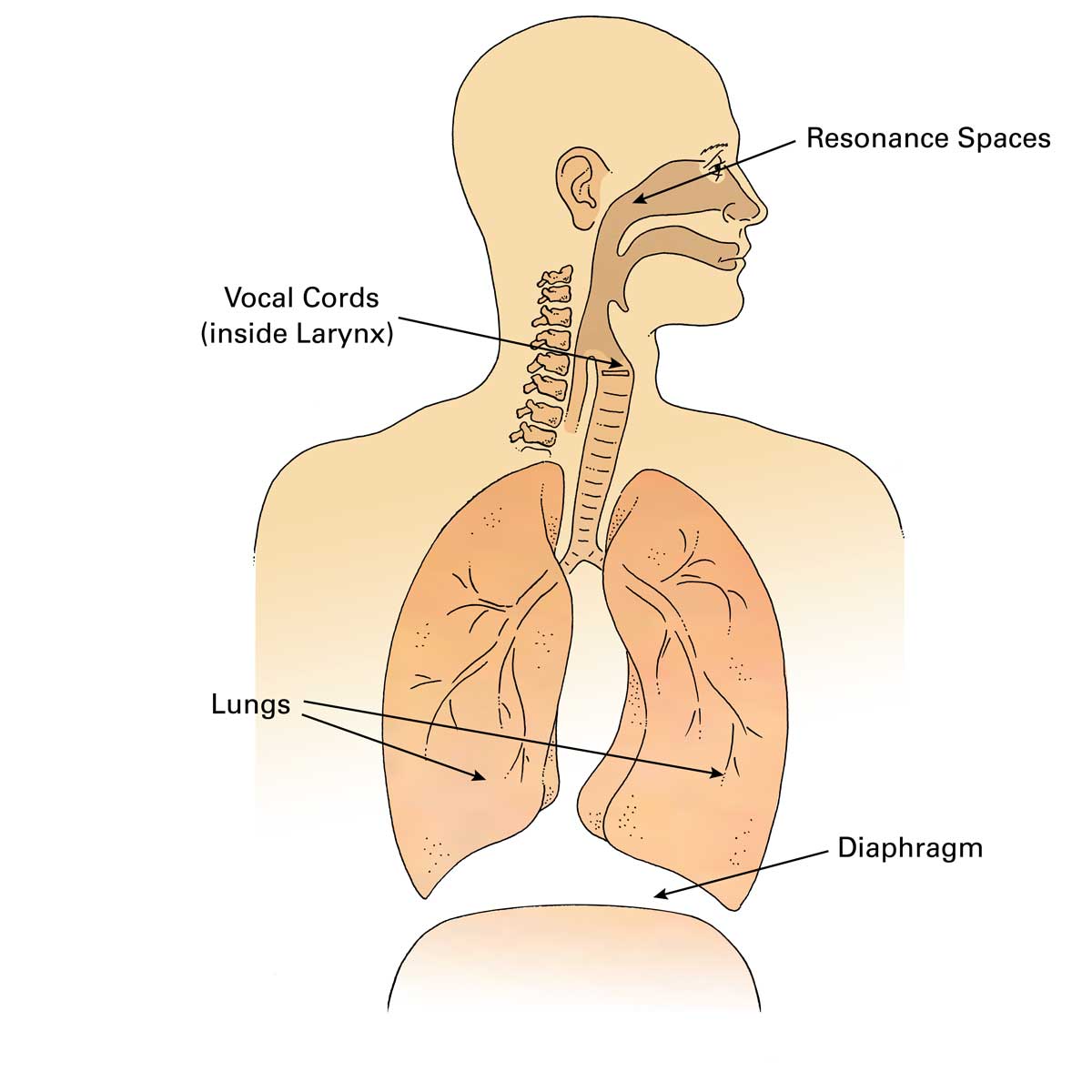
How We Sing
The ability to sing is a by-product of the way nature has equipped the human body for speech. By simply imagining the pitch of a note, the body automatically knows how to achieve this note once the brain has issued the order to produce it. The lyrics to a song may be in any number of languages, but the pitch of a note is common to all languages.
The sound which we know as singing is made primarily by air from an exhaled breath passing over the vocal cords, causing them to vibrate. The vocal cords are small muscular folds of skin located inside the larynx (commonly known as the "voice box"). The sound is then amplified (made louder) and modified by the resonance spaces in the mouth and throat and behind the nose.
The sound may also be altered by the shape of the mouth, the lips and movements of the tongue as the sound leaves the mouth. Because everybody’s anatomy is slightly different, each voice will have its own individual sound both when speaking and singing.
The following diagram shows all of the parts of the body which are involved in creating the initial sound of a singing note. A singing breath usually starts with the diaphragm muscle and then travels upward from there.
The air then flows over the vocal cords which are activated by a message from the brain. This produces the initial sound just as in speech. The sound then travels up into the cavities in the throat and behind the nose.
These are called resonance spaces because they cause the sound to resonate, which means they reinforce and prolong the sound by vibration. These resonance spaces affect the tone of the sound and contribute to the individual sound of each person’s voice.
The final aspect to singing is the articulation or shaping of the sound, which is done by the tongue, throat and lips. All these things combine to form the sounds we know as singing.
